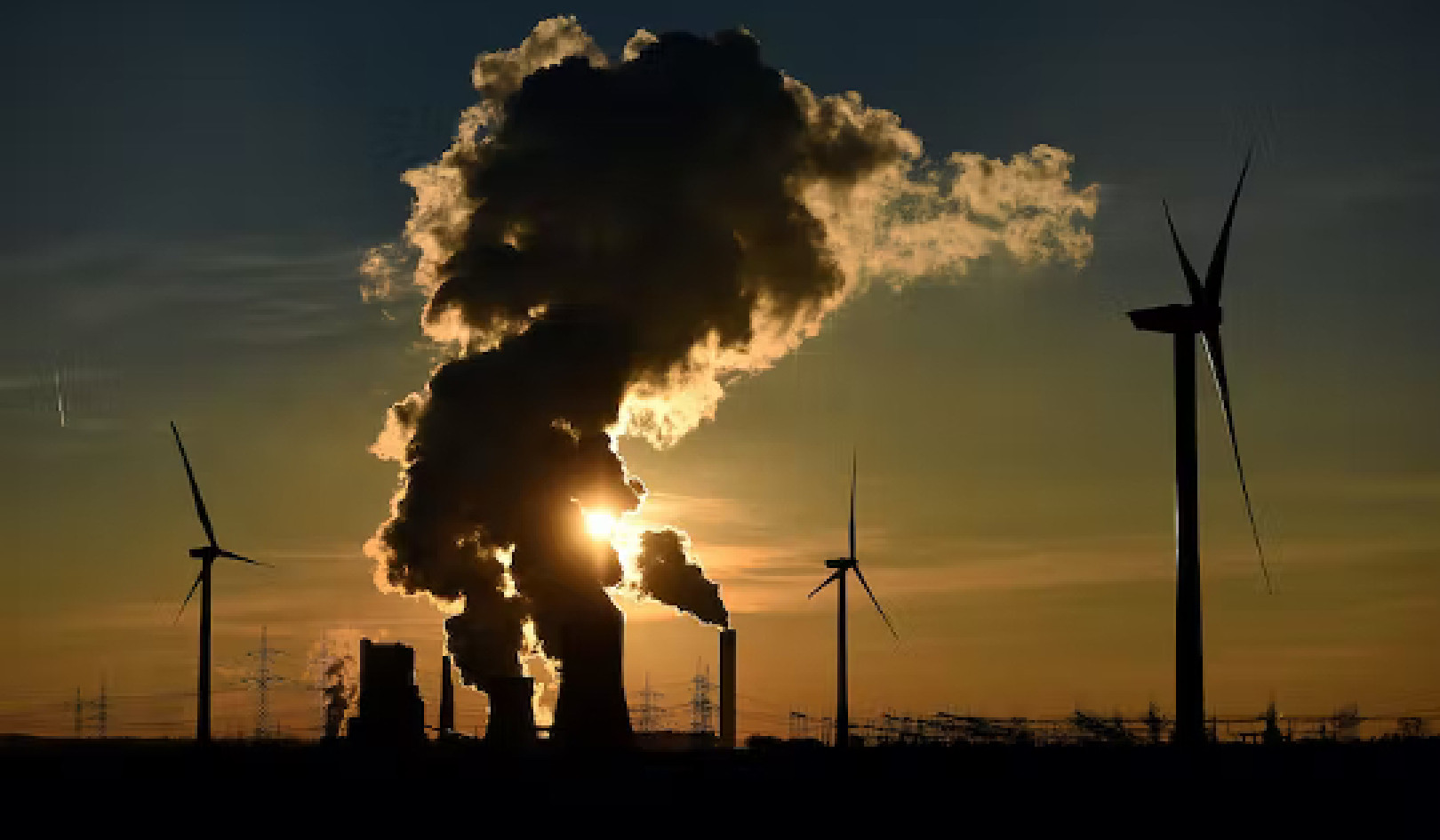
The price of gas has been soaring across the U.S. AP Photo/Ashley Landis
Economists typically focus on the three big macroeconomic variables: gross domestic product, unemployment and inflation.
Each measure tells its own important story about how the economy is doing. GDP – or the total output of all good and services produced – shows us what the broader economy is doing, unemployment tells us about the job situation, and inflation measures the movement of prices.
But their stories also overlap. And unfortunately, they usually don’t all tell us good news at the same time.
Under normal circumstances, there are trade-offs. You usually can’t have a strong pace of GDP growth and low unemployment without suffering the pains of higher inflation. And if you’re able to keep inflation low, that usually comes at the expense of subdued GDP and possibly higher unemployment.
So, normally there is some good news and some bad news. But with stagflation, there is no good news.
Stagflation happens when the economy is experiencing both economic stagnation – stalling or falling output – and high inflation. Additionally, a struggling economy will drive up unemployment.
In other words, all three macroeconomic indicators are going in the wrong direction.
Has the US experienced it before?
The last time this happened in the U.S. was in the 1970s, another period when energy prices were skyrocketing.
As a result of an embargo led by OPEC, a cartel of oil-producing countries, the price of crude doubled from 1973 to 1975.
Countries like the U.S. that imported a lot of oil experienced both high inflation and recession. The Consumer Price Index exceeded 10% for the first time since the 1940s, unemployment jumped from 4.6% in 1973 to 9% in 1975, and the GDP plunged.
The same events – OPEC pushing up prices, inflation soaring, economies sinking into recession – repeated just a few years later. Over this period, rising unemployment and reduced business activity meant everyone had less money, yet surging inflation meant every dollar was worth a little bit less every day.
Moreover, this experience with stagflation fundamentally altered Americans’ way of life and ushered in an era of fuel conservation and rationing not seen since World War II.
What causes stagflation?
The causes of stagflation are still hotly debated by economists. Before the 1970s, they generally didn’t believe it was possible to have both high inflation and high unemployment from a stagnating economy. Economists had thought that unemployment and inflation were inversely linked.
There are a few different theories on how both high inflation and a stagnating economy can coexist, however.
The most common is that stagflation happens when there is a so-called negative supply shock. That is, when something that is crucial to an entire economy, such as energy or labor, is suddenly in short supply or becomes more expensive. One obvious example is crude oil.
Oil is a key input into the production of many goods and services. When some event, like the Russian invasion of Ukraine, reduces the supply, the price of oil rises. Businesses in the U.S. and elsewhere that produce gasoline, tires and many other products experience rising transportation costs, which makes it less profitable to sell stuff to consumers or other companies no matter the price.
As a result, a great number of producers decrease their production, which decreases aggregate supply. This decrease leads to falling national output and an increased unemployment rate together with higher overall prices.
Can the US do anything about it?
For policymakers, there’s almost nothing worse than the specter of stagflation.
The problem is that the ways to fight either one of those two problems – high inflation, low growth – usually end up making the other one even worse.
The Federal Reserve, for example, could raise interest rates – as it’s widely expected to do on March 16, 2022 – which can help reduce inflation. But that also hurts economic activity and overall growth, because it puts the breaks on borrowing and investment. Or policymakers could try to spur more economic growth – whether through government stimulus or keeping interest rates low – but that would likely end up fueling more inflation.
Put another way, you’re damned if you do, damned if you don’t. And that means solving the problem may simply depend on circumstances out of U.S. policymakers’ control, such as an end to the crisis in Ukraine or finding ways to immediately increase oil supply – which is tricky.
In other words, stagflation is a nightmare you never want to live through.
About The Author
Veronika Dolar, Assistant Professor of Economics, SUNY Old Westbury
This article is republished from The Conversation under a Creative Commons license. Read the original article.
Recommended books:
Capital in the Twenty-First Century
by Thomas Piketty. (Translated by Arthur Goldhammer)
 In Capital in the Twenty-First Century, Thomas Piketty analyzes a unique collection of data from twenty countries, ranging as far back as the eighteenth century, to uncover key economic and social patterns. But economic trends are not acts of God. Political action has curbed dangerous inequalities in the past, says Thomas Piketty, and may do so again. A work of extraordinary ambition, originality, and rigor, Capital in the Twenty-First Century reorients our understanding of economic history and confronts us with sobering lessons for today. His findings will transform debate and set the agenda for the next generation of thought about wealth and inequality.
In Capital in the Twenty-First Century, Thomas Piketty analyzes a unique collection of data from twenty countries, ranging as far back as the eighteenth century, to uncover key economic and social patterns. But economic trends are not acts of God. Political action has curbed dangerous inequalities in the past, says Thomas Piketty, and may do so again. A work of extraordinary ambition, originality, and rigor, Capital in the Twenty-First Century reorients our understanding of economic history and confronts us with sobering lessons for today. His findings will transform debate and set the agenda for the next generation of thought about wealth and inequality.
Click here for more info and/or to order this book on Amazon.
Nature's Fortune: How Business and Society Thrive by Investing in Nature
by Mark R. Tercek and Jonathan S. Adams.
 What is nature worth? The answer to this question—which traditionally has been framed in environmental terms—is revolutionizing the way we do business. In Nature’s Fortune, Mark Tercek, CEO of The Nature Conservancy and former investment banker, and science writer Jonathan Adams argue that nature is not only the foundation of human well-being, but also the smartest commercial investment any business or government can make. The forests, floodplains, and oyster reefs often seen simply as raw materials or as obstacles to be cleared in the name of progress are, in fact as important to our future prosperity as technology or law or business innovation. Nature’s Fortune offers an essential guide to the world’s economic—and environmental—well-being.
What is nature worth? The answer to this question—which traditionally has been framed in environmental terms—is revolutionizing the way we do business. In Nature’s Fortune, Mark Tercek, CEO of The Nature Conservancy and former investment banker, and science writer Jonathan Adams argue that nature is not only the foundation of human well-being, but also the smartest commercial investment any business or government can make. The forests, floodplains, and oyster reefs often seen simply as raw materials or as obstacles to be cleared in the name of progress are, in fact as important to our future prosperity as technology or law or business innovation. Nature’s Fortune offers an essential guide to the world’s economic—and environmental—well-being.
Click here for more info and/or to order this book on Amazon.
Beyond Outrage: What has gone wrong with our economy and our democracy, and how to fix it -- by Robert B. Reich
 In this timely book, Robert B. Reich argues that nothing good happens in Washington unless citizens are energized and organized to make sure Washington acts in the public good. The first step is to see the big picture. Beyond Outrage connects the dots, showing why the increasing share of income and wealth going to the top has hobbled jobs and growth for everyone else, undermining our democracy; caused Americans to become increasingly cynical about public life; and turned many Americans against one another. He also explains why the proposals of the “regressive right” are dead wrong and provides a clear roadmap of what must be done instead. Here’s a plan for action for everyone who cares about the future of America.
In this timely book, Robert B. Reich argues that nothing good happens in Washington unless citizens are energized and organized to make sure Washington acts in the public good. The first step is to see the big picture. Beyond Outrage connects the dots, showing why the increasing share of income and wealth going to the top has hobbled jobs and growth for everyone else, undermining our democracy; caused Americans to become increasingly cynical about public life; and turned many Americans against one another. He also explains why the proposals of the “regressive right” are dead wrong and provides a clear roadmap of what must be done instead. Here’s a plan for action for everyone who cares about the future of America.
Click here for more info or to order this book on Amazon.
This Changes Everything: Occupy Wall Street and the 99% Movement
by Sarah van Gelder and staff of YES! Magazine.
 This Changes Everything shows how the Occupy movement is shifting the way people view themselves and the world, the kind of society they believe is possible, and their own involvement in creating a society that works for the 99% rather than just the 1%. Attempts to pigeonhole this decentralized, fast-evolving movement have led to confusion and misperception. In this volume, the editors of YES! Magazine bring together voices from inside and outside the protests to convey the issues, possibilities, and personalities associated with the Occupy Wall Street movement. This book features contributions from Naomi Klein, David Korten, Rebecca Solnit, Ralph Nader, and others, as well as Occupy activists who were there from the beginning.
This Changes Everything shows how the Occupy movement is shifting the way people view themselves and the world, the kind of society they believe is possible, and their own involvement in creating a society that works for the 99% rather than just the 1%. Attempts to pigeonhole this decentralized, fast-evolving movement have led to confusion and misperception. In this volume, the editors of YES! Magazine bring together voices from inside and outside the protests to convey the issues, possibilities, and personalities associated with the Occupy Wall Street movement. This book features contributions from Naomi Klein, David Korten, Rebecca Solnit, Ralph Nader, and others, as well as Occupy activists who were there from the beginning.
Click here for more info and/or to order this book on Amazon.























